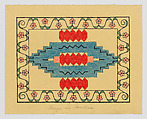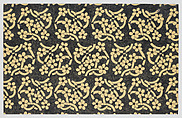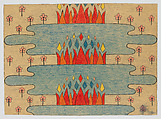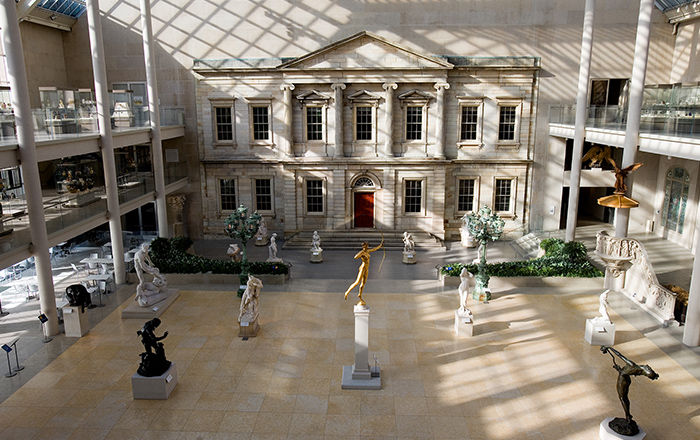Fiorello La Guardia (1882–1947)
Mary Sully Native American
Mary Sully, born Susan Deloria on the Standing Rock Reservation in South Dakota, was a little-known, reclusive Yankton Dakota artist who, between the 1920s and the 1940s, created groundbreaking works informed by her Native American and settler ancestry. Working without patronage, in near obscurity, and largely self-taught, Sully produced some two hundred intricately designed and vividly colored drawings that complicate traditional notions of Native American and modern art. They mix meaningful aspects of her Dakota heritage with visual elements observed from other Native nations and the aesthetics of urban life. Euro-American celebrities from popular culture, politics, and religion inspired some of her most striking works, which she called “personality prints”—abstract portraits arranged as vertical triptychs. Together, Sully’s works offer a fresh, complex lens through which to consider American art and life in the early twentieth century.
This work reveals Sully’s admiration for Fiorello La Guardia—the mayor of New York City from 1934 to 1945—known for his charismatic personality and commitment to civic reform. It revolves around designs of crowns and densely drawn flowers, a reference to his Italian first name, which translates as “little flower.” During three terms leading the city through the Great Depression and World War II, La Guardia unified the transit system; expanded construction of public housing, playgrounds, parks, and airports; reorganized the New York Police Department; and implemented federal New Deal programs. As a socialist member of the Republican party, he also curbed the powerful Democratic Tammany Hall political machine. A highly visible national figure, La Guardia—like his close ally President Franklin D. Roosevelt—harnessed radio to expand his influence.
This image cannot be enlarged, viewed at full screen, or downloaded.
This artwork is meant to be viewed from right to left. Scroll left to view more.






